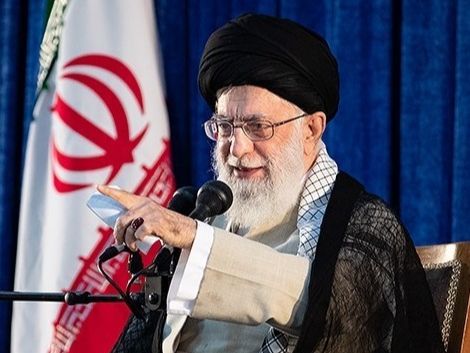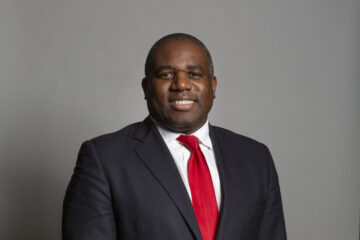One year on from the death in Iranian police custody of 22-year-old Mahsa Amini, Iran remains an international pariah posing threats on numerous fronts.
What happened
- The first anniversary of Amini’s death, on Saturday 16 September, saw thousands of people around the world take to the streets to demonstrate in support of the rights of women in Iran – including in the UK, Turkey, Germany, India, Australia, Italy and Belgium.
- Amini died in the custody of Iran’s so-called morality police after being arrested for allegedly not wearing her headscarf properly on 16 September 2022.
- In Iran itself, Mahsa’s father, brother and uncle were reportedly detained by the Iranian Revolutionary Guards Corps and warned against marking the anniversary of her death.
- Family members of other people killed during the protests initially sparked by Amini’s death have also reportedly been arrested or threatened in a similar manner.
- Despite this intimidation, protests also erupted in Iran itself, with video footage showing demonstrations in cities across the country, including Tehran, Mashad, Ahvaz, Lahijan, Arak and Senandaj.
- In the videos, protestors can be heard chanting “Women, Life, Freedom” – a popular rallying cry that emerged last year in the wake of Amini’s death. Some protestors also reportedly chanted death slogans against supreme leader Ali Khamenei.
Crackdown
- In response to the anniversary protests, the Iranian authorities deployed armed guards in many cities as a show of force, while police officers were seen chasing protestors in the northern city of Lahijan.
- In Iran’s Kurdish region, where Amini was from, the regime has reportedly upped security significantly, conducting a wave of arrests on suspicion of “planning to create chaos” in the run-up to the anniversary.
- On Saturday, the IRGC confirmed that it had arrested a man with dual citizenship on allegations of “attempted rioting and to cause disruptions” in the city of Karaj, west of Tehran.
- The suspect – whose other nationality has not yet been confirmed – was found in possession of “several smartphones and dollars of significant value”, according to a report by the regime’s Tasnim news agency.
- The arrest leaves open the possibility of further “hostage diplomacy” by Tehran, in which foreign nationals are arrested to obtain concessions such as the release of detained Iranians abroad.
Meanwhile…
- Amid its abysmal human rights record, attention has also returned to Tehran’s nuclear programme, development of which has continued apace since the Trump administration unilaterally withdrew from the nuclear deal in 2018.
- On Saturday, Iran barred around a third of the International Atomic Energy Agency’s most experienced inspectors from overseeing nuclear sites in the country in a move that was slammed as unprecedented by the IAEA’s director-general, Rafael Grossi.
- “I strongly condemn this disproportionate and unprecedented unilateral measure which affects the normal planning and conduct of agency verification activities in Iran and openly contradicts the cooperation that should exist between the agency and Iran,” Grossi stated.
- Last week, confidential reports from the IAEA suggested that Iran has made “no progress” on several outstanding nuclear surveillance issues, including installing more cameras to monitor activity.
- Another report claimed that Iran’s total stockpile of enriched uranium was more than 18 times higher than the limit set in the 2015 nuclear deal, at nearly 3,800kg.
- Last week also saw Grossi express his concern that the international community was losing interest in holding Iran to account for its advancing nuclear programme.
- On Friday, US secretary of state Anthony Blinken told reporters that the US was “not engaged in discussion or negotiation” with Iran over its nuclear programme.
International action
In the absence of a revived nuclear deal with Iran – an ambition Joe Biden campaigned on in 2020, but which has been derailed by factors including the Amini protests and Tehran’s support for Russia’s invasion of Ukraine – the international community has responded to developments with fresh sanction announcements.
- In a statement, the Biden administration marked the anniversary of Amini’s death by adding 25 Iranian officials and an internet censorship firm to its sanctions blacklist, saying all were linked to Tehran’s suppression of protests after Amini’s death.
- The US sanctions were announced in coordination with the EU, UK, Canada and Australia, targeting individuals such as Gholamali Mohammadi, head of Iran’s prisons system, culture minister Mohammad Mehdi Esmaili, and Tehran mayor Alireza Zakani.
- More significantly, the three European parties to the 2015 nuclear deal – the UK, France and Germany – announced last week that they would not lift sanctions on Iran in line with the timetable set out by the 2015 deal, which if lifted would have allowed Tehran to import and export ballistic missiles and drones. This upcoming issue was highlighted by LFI chair Steve McCabe in a letter to the foreign secretary in June this year.
- However, the announcement made no reference to sanctions imposed by UN security council resolution 2231, also due to expire in October – which LFI chair Steve McCabe also warned about in his letter to the foreign secretary in June this year – the expiration of which would allow for ballistic missile tests and provide as “massive boost” to Iran’s missile arsenal.
What happens next
The prospect of a revived nuclear deal with Iran appears remote, while the regime continues to slide ever further into authoritarianism and international pariah status. Despite this month’s additional sanctions, October will be a significant deadline for which the international community – including the UK – appears to be unprepared.


